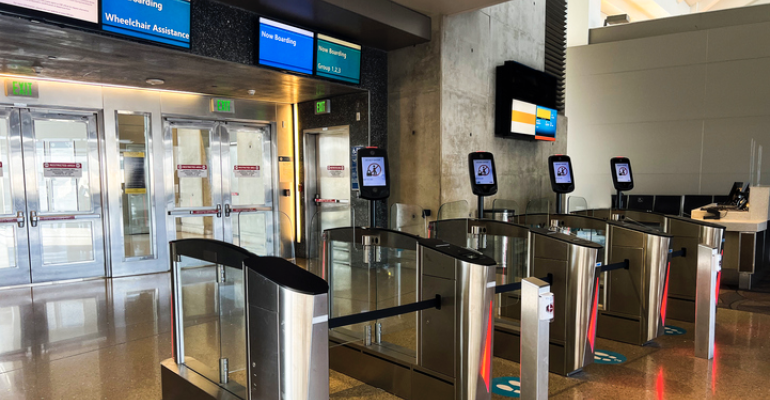On April 25, the U.S. Travel Association came out forcefully against an amendment to a bill before Congress that reauthorizes and funds the Federal Aviation Administration—an amendment that U.S. Travel says would scuttle technological progress and lengthen wait times at airport-security checkpoints.
Specifically, the amendment proposed by Senators Senator Jeff Merkley (D-OR) and Senator John Kennedy (R-LA) would prohibit the Transportation Security Administration from using most facial-matching technology at airport checkpoints. Such technology is used at about 25 major U.S. airports for travelers enrolled in the TSA PreCheck program, while TSA seeks to install the application at more than 400 U.S. airports over the next few years.
In February, Merkley sent a letter to TSA Administrator David Pekoske asking to halt the use of facial-recognition technology because of “racial discrimination [it] may exacerbate,” citing a study by the National Institute of Standards and Technology that found Asian and African American people were around 100 times more likely to be misidentified by facial recognition technology than white men.
This week, Geoff Freeman, president and CEO of the U.S. Travel Association, countered that “biometric technology is the future of air-traveler screening and is supported by the traveling public. Misguided efforts to place blanket restrictions on facial technology only succeed in harming security, wasting travelers’ time, and costing millions in taxpayer dollars invested in developing state-of-the-art screening technology.”
Former U.S. Representative John Katko, who sat on the House Homeland Security Committee until early 2023, added that “our nation has made vital investments to ensure safe and efficient passenger screening using advanced identity-verification technology. To abandon biometric applications and the progress we’ve made would make airports less safe.”
Seth Stodder, a former assistant secretary at the Department of Homeland Security, noted that Atlanta’s Hartsfield-Jackson International Airport—the busiest airport in the world—has used the facial-identity application to good effect. Members of Congress “should [go there] and see firsthand how TSA’s new systems work, and how travelers are responding. No one is forced to use the new system, but people are volunteering in droves to use it, just like people clamored to sign up for TSA PreCheck.”
What’s Facial Analysis, Then?
Business-event planners might have heard about another tech application that captures facial data—one that can help them determine how engaged their attendees are during a given session.
There are a few reasons why this application should be assessed differently than facial-recognition tools that are used not only at airports, but also at some registration desks for meetings and exhibitions.
A firm called Zenus has developed a facial-analysis tool specifically for use in meeting sessions; it tracks the facial expressions of attendees during a session, looking for changes that would indicate the audience is gaining or losing interest in the content being presented. Last December, the International Association of Exhibitions and Events implemented the Zenus tool throughout the education and activation areas at its annual show, with the promise of providing the business-events industry with a report on how it performed. That report is due for release in the coming months.
Panos Moutafis, founder and CEO of Zenus, told MeetingsNet that the tool “detects the presence of a face [but] without computing any biometric identifiers.” Instead, it only collects data points related to “metrics such as dwell time and facial expressions to discern [a person’s] sentiment. It may also predict demographics such as age range and biological sex.”
In short, the data collected for facial analysis is limited enough that “it cannot identify people,” Moutafis said.
Check out this MeetingsNet article to learn more about how this facial-analysis tool works in general, and how it worked at IAEE’s event.




